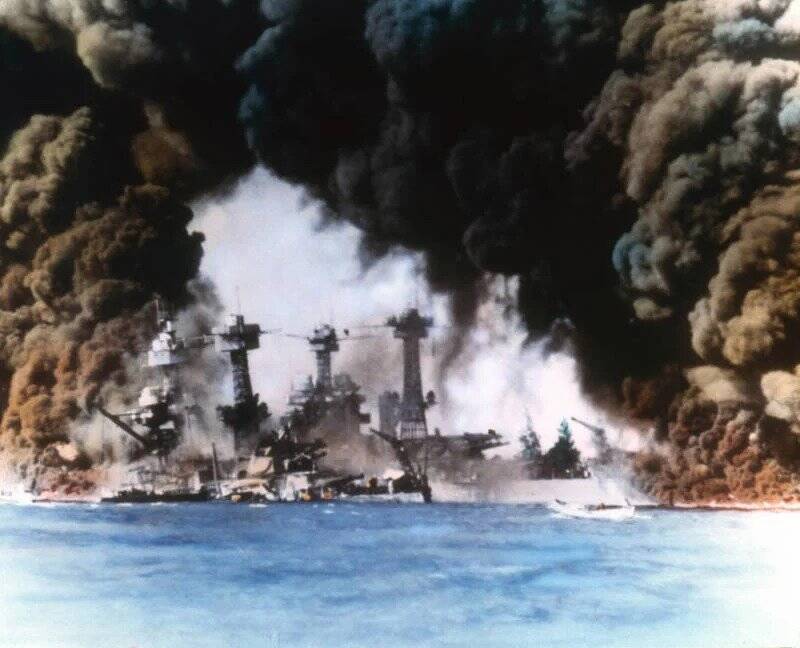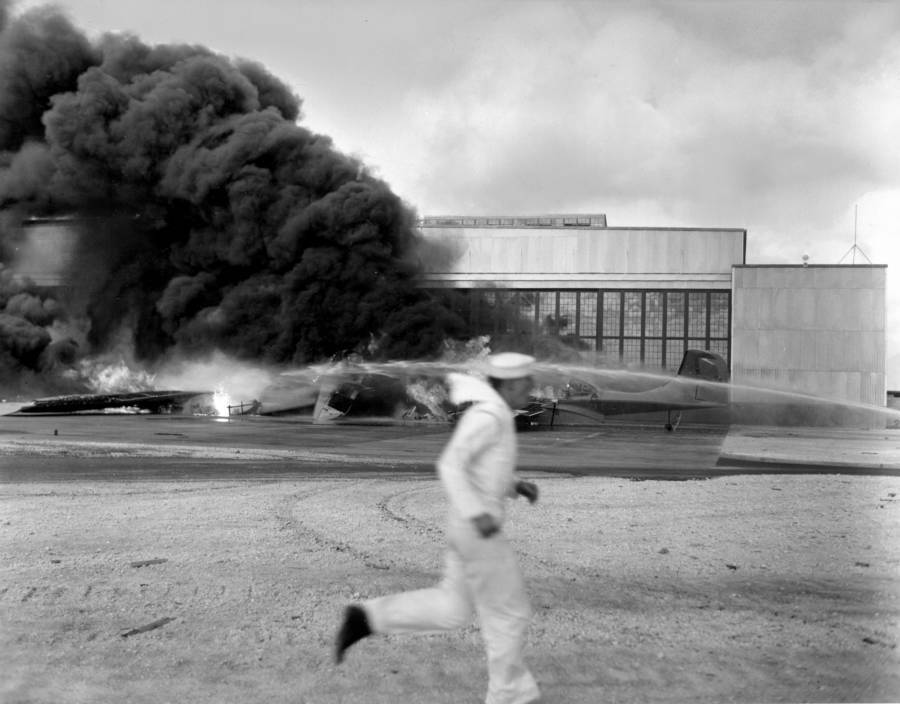Pearl Harbor: One Of The Most Infamous Japanese War Crimes

US Navy/Interim Archives/Getty ImagesSmoke billows from American battleships during the Japanese attack on Pearl Harbor.
Perhaps the most notorious of all Japanese war crimes is the December 7, 1941 attack on Pearl Harbor in Hawaii. Then, Japanese planes appeared without warning and bombed much of the U.S. Pacific Fleet. They damaged or destroyed nearly 20 of the United States’ vessels — as well as 300 airplanes — and killed 2,400 American soldiers and civilians.
The attack, which drew the United States into World War II, was a war crime because the Japanese didn’t give any warning in advance.
As PearlHarbor.org notes, the 1907 Hague Convention clearly stated that any attack launched “without previous and explicit warning” was against international law. And the Kellog-Briand Pact of 1928, which both the U.S. and Japan had signed, further stated that an act of war like Pearl Harbor should not be used to resolve “disputes or conflicts of whatever nature or of whatever origin they may be, which may arise among them.”

Time Life Pictures/National Archives/The LIFE Picture Collection/Getty ImagesA sailor runs for cover during the attack on Pearl Harbor.
As it turned out, the Japanese actually had prepared a warning for the U.S. But it wasn’t delivered until after the bombing had taken place. According to the Franklin D. Roosevelt Presidential Library and Museum, this was because of delays in translating and typing up the message. American officials didn’t receive it until well after the attack had started.
After the war ended, the Tokyo War Crimes Trials found that the attack on Pearl Harbor had been illegal, and a number of high-ranking Japanese officials were charged with murder and crimes against peace.
After reading about the horrific Japanese war crimes of World War II, learn about the World War II myths that people need to stop spreading. Then, have a look at the worst U.S. war crimes committed during World War II.





